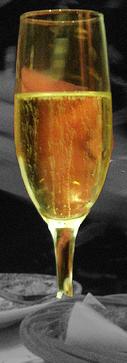Catalan Holiday Foods

A loyal reader, Ward Ching, suggested that he would like to know about traditional Catalan holiday foods. The following is my response. I will, in some cases, describe foods that we haven’t actually eaten, since we observe a gluten-free and sugar-free diet. You can imagine how many of the following dishes would not be on our diet.
The traditional Christmas Day meal begins with escudella amb carn d’olla, which is actually two dishes in one. The escudella part (also called sopa de galets) is a clear soup filled with large snail-shaped pastas (the galets). It is the broth that has been removed from the carn d’olla (meat in pot) part of the dish. As Christmas approaches we see the large snail-shaped macaroni for sale in the shops. We've seen the shape used for fancy moulded candles.
When the soup course is finished, the main course, the carn d’olla, is served. The ingredients of the carn d’olla are white sausage (botifarra blanca), blood sausage (botifarra negra), pieces of beef, pork, lamb, and chicken, plus the most important ingredient of all: the pilota, a huge meatball made of sausage meat. The pilota is the prize of the dish, and there must be enough for everyone to get a piece. All this meat is cooked in a broth along with potatoes, cabbage, and garbanzos. When done, the broth is removed and pasta added for the escudella.
Both the sopa and the carn d’olla are served with generous quantities of local wine, either red (vino negra) or sparkling (cava). The local cava is light and dry and compares with the best French Chamgagne. Catalans drink a lot of these wines with their meals.
When everyone is stuffed and has had another glass of cava, it is time for the Christmas desserts: neules and torróns.
A neula is a crunchy crepe or biscuit rolled into a long tube. It is said to have been invented by a nun who rolled a communion wafer into a cylinder. The Catalans dip their neulas into cava before munching them.
The second dessert course is torrón, which is a sticky bar of almonds, honey, and eggs. That is the traditional torrón blando. It has the consistency of a solid nut butter or halvah. There is another form called torrón duro (see photo), an almond brittle made with the same ingredients. Nowadays, torrón comes in many flavors, including chocolate and using other nuts, such as hazelnuts. It is served with a sweet wine, such as Moscatell.
The final part of the Christmas feast is the coffee, which is usually espresso (café solo) laced with brandy (making it not so "solo").
Another common treat of the holiday season is the rosca de Reyes (Tortell in Catalan), a ring-shaped sweet bread filled with candied fruit and topped with a gold cardboard crown. There is a trinket, traditionally a figure of the baby Jesus or one of the three kings, hidden inside, which is good luck for the person who finds it. That person will be crowned "king" or "queen" of the day using the cardboard crown. There is also a dry fava bean hidden in the rosca, and whoever finds it must pay for the rosca next year. The rosca will be the hit of the party on January 6, the Día de Los Reyes (Day of the Three Kings, AKA Epiphany), which is the climax of the Christmas holiday.
Finally, we have the winter favorite all over Spain—churros. Donut-like sticks of pure grease, the churros are usually dunked in thick hot chocolate that is nearly like melted Hershey bars. That will clog your arteries!
Here is the Christmas market, still going full blast after December 25. The intensity is building for Los Reyes on January 6.







